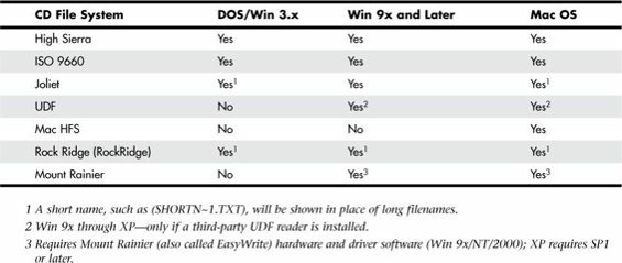Hardware Reference
In-Depth Information
In 1985-1986, several companies got together and published the High Sierra file format
specification, which was the first industry-standard CD-ROM file system that made CD-ROMs
universally usable in PCs. Today several file systems are used on optical discs, including the
following:
• High Sierra
• ISO 9660 (based on High Sierra)
• Joliet
• UDF (Universal Disk Format)
• Mac HFS (Hierarchical File Format)
• Rock Ridge
• Mount Rainier (also known as Mt. Rainier)
Not all optical disc file system formats can be read by all OSs.
Table 11.22
shows the primary file
systems used and which OSs support them.
Table 11.22. Optical Disc File System Formats
Note
The Mac HFS and UNIX Rock Ridge file systems are not supported by PC OSs such as DOS
and Windows and therefore are not covered in depth here.
High Sierra
To make optical discs readable on all systems without having to develop custom file systems and
drivers, it was in the best interests of all PC hardware and software manufacturers to resolve the
optical file format standardization issue. In 1985, representatives from TMS, DEC, Microsoft,
Hitachi, LaserData, Sony, Apple, Philips, 3M, Video Tools, Reference Technology, and Xebec met at
what was then called the High Sierra Hotel and Casino in Lake Tahoe, Nevada, to create a common
logical format and file structure for CD-ROMs. In 1986, they jointly published this standard as the
“Working Paper for Information Processing: Volume and File Structure of CD-ROM Optical Discs
for Information Exchange (1986).” This standard was subsequently referred to as the High Sierra
format.
This agreement enabled all drives using the appropriate driver (such as MSCDEX.EXE supplied by






